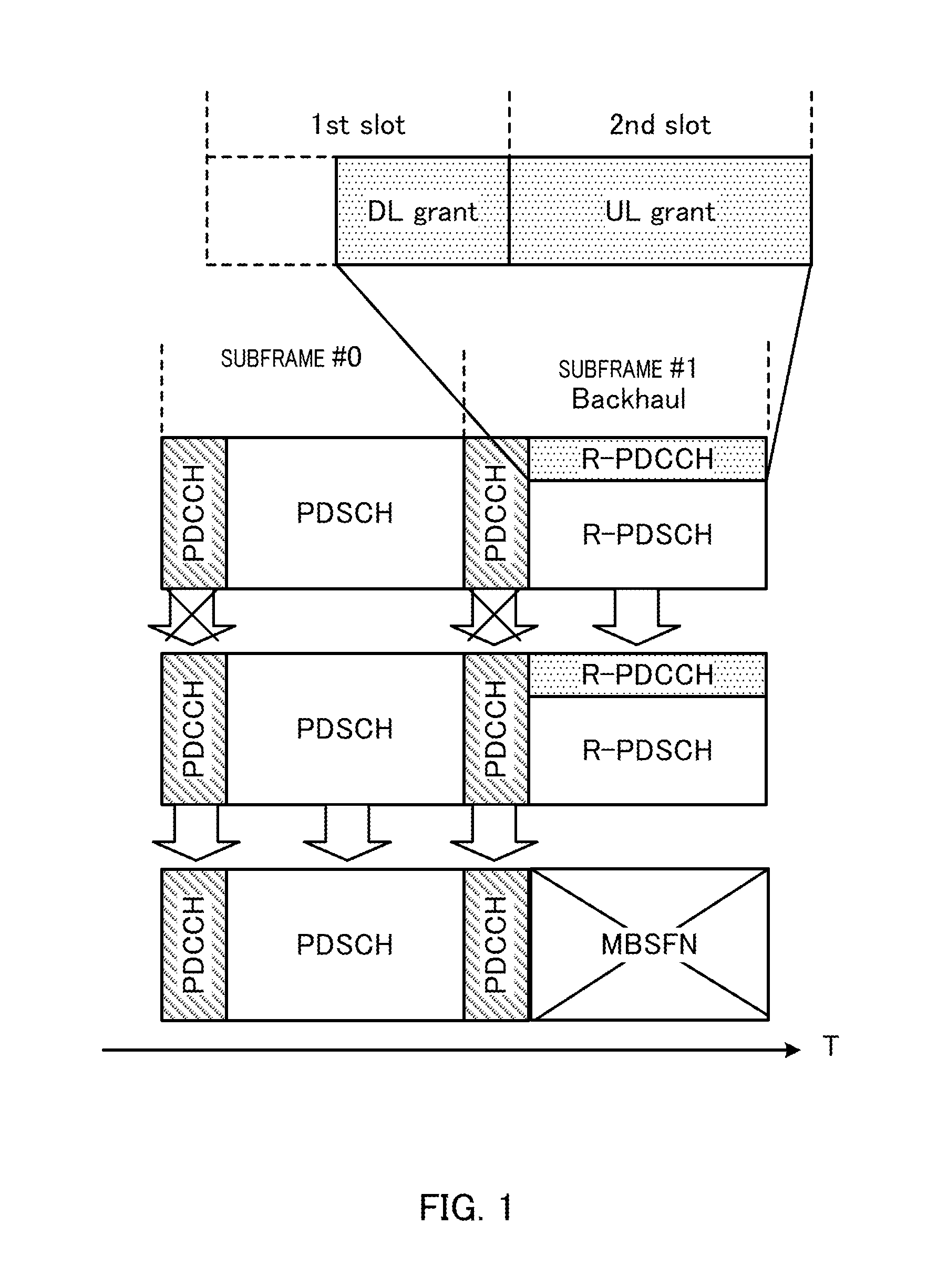Transmission device, reception device, transmission method, and reception method
a technology of transmission device and reception device, which is applied in the direction of wireless communication, transmission path division, wireless commuication services, etc., can solve the problems of limiting the increase in the number of base stations, so as to achieve flexible transmission mode.
- Summary
- Abstract
- Description
- Claims
- Application Information
AI Technical Summary
Benefits of technology
Problems solved by technology
Method used
Image
Examples
embodiment 1
Overview of Communication System
[0048]A communication system according to Embodiment 1 of the present invention has base station 100 and terminal 200. The communication system is an LTE-A system, for example. Base station 100 is an LTE-A base station, and terminal 200 is an LTE-A terminal, for example.
[0049]FIG. 5 illustrates a main configuration of base station 100 according to Embodiment 1 of the present invention. Base station 100 transmits control signals for terminal 200 after mapping the control signals to a first resource region usable for both a control channel and a data channel (i.e., R-PDCCH region in an LTE-A system) or in a second resource region usable for a control channel (i.e., PDCCH region in an LTE-A system). Furthermore, the first resource region and the second resource region are arranged in a subframe in the order of the second resource region and the first resource region in the time direction.
[0050]In base station 100, transmission mode setting section 101 se...
embodiment 2
[0090]As with Embodiment 1, Embodiment 2 sets one transmission mode for each of a first downlink resource region and a second downlink resource region out of a plurality of transmission modes associated with a plurality of control signal formats (that is, DCI formats) and transmission schemes corresponding to the respective control signal formats and used for data transmission to terminal 200. However, in Embodiment 2, the transmission mode set for the second downlink resource region (that is, PDCCH region in an LTE-A system) is fixed. Since a base station and a terminal according to Embodiment 2 are similar to base station 100 and terminal 200 according to Embodiment 1, these will be described using FIGS. 7 and 8.
[0091]In base station 100 of Embodiment 2, transmission mode setting section 101 sets respective transmission modes for PDCCH and R-PDCCH. However, in Embodiment 2, the transmission mode set for the PDCCH region is fixed.
[0092]Here, transmission mode setting section 101 ge...
embodiment 3
[0097]As with Embodiment 1, Embodiment 3 sets one transmission mode for each of a first downlink resource region and a second downlink resource region out of a plurality of transmission modes associated with a plurality of control signal formats (that is, DCI formats) and transmission schemes corresponding to the respective control signal formats and used for data transmission to terminal 200. However, Embodiment 3 generates a control signal including identification information corresponding to a pair of transmission mode information corresponding to PDCCH and transmission mode information corresponding to R-PDCCH, and reports the generated control signal through one kind of signaling. Since a base station and a terminal according to Embodiment 3 are similar to base station 100 and terminal 200 according to Embodiment 1, these will be described using FIGS. 7 and 8.
[0098]In base station 100 of Embodiment 3, transmission mode setting section 101 sets respective transmission modes for ...
PUM
 Login to View More
Login to View More Abstract
Description
Claims
Application Information
 Login to View More
Login to View More - R&D
- Intellectual Property
- Life Sciences
- Materials
- Tech Scout
- Unparalleled Data Quality
- Higher Quality Content
- 60% Fewer Hallucinations
Browse by: Latest US Patents, China's latest patents, Technical Efficacy Thesaurus, Application Domain, Technology Topic, Popular Technical Reports.
© 2025 PatSnap. All rights reserved.Legal|Privacy policy|Modern Slavery Act Transparency Statement|Sitemap|About US| Contact US: help@patsnap.com



